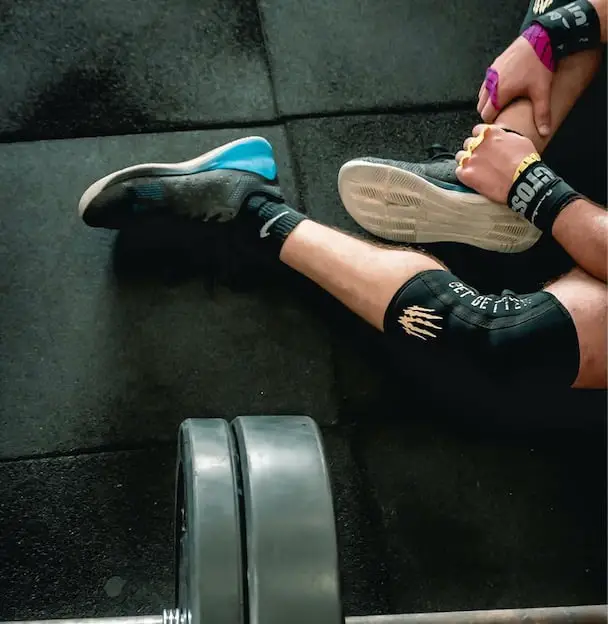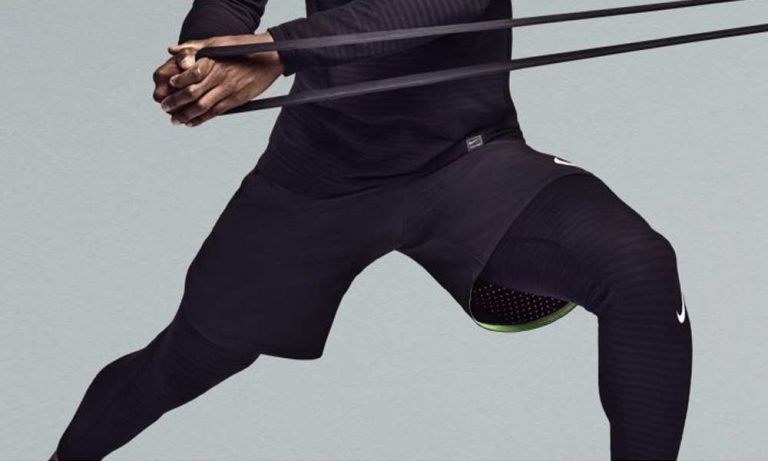How to Tape Shin Splints: A Quick Guide to Instant Relief

ListedFit is reader-supported. When you buy through links on our site, we may earn a small commission.
Shin splints are a common injury that affects athletes and runners. It is a painful condition that occurs when the muscles, tendons, and bone tissue around the shinbone become inflamed. The pain can be felt along the inside or outside of the shinbone and can be worsened by physical activity.
One way to alleviate the pain caused by shin splints is to tape the affected area. Taping can provide support and compression to the affected tissues, which can reduce inflammation and pain. Taping can also help prevent further injury by stabilizing the muscles and tendons around the shinbone.
There are several ways to tape shin splints, and the technique used will depend on the location and severity of the injury. It is important to follow proper taping techniques to ensure that the tape provides the necessary support without causing discomfort or restricting movement.
In this article, we will explore different taping methods that can be used to alleviate the pain caused by shin splints.
What Exactly are Shin Splints?
Shin splints, also known as medial tibial stress syndrome, is a common condition that causes pain and discomfort in the lower leg. The pain typically occurs along the inner edge of the shinbone (tibia), and can range from mild to severe. Shin splints are often caused by overuse or repetitive stress on the muscles, tendons, and bones in the lower leg.
Shin splints are common in athletes, particularly runners, dancers, and military recruits. They can also occur in people who engage in activities that involve a lot of jumping, such as basketball or volleyball. The condition is usually caused by a combination of factors, including overuse, improper footwear, and biomechanical imbalances.
People who have flat feet or high arches are also at higher risk of developing shin splints. Flat feet can cause the arch of the foot to collapse, which can increase stress on the muscles and tendons in the lower leg. High arches, on the other hand, can cause the foot to roll outward, which can also increase stress on the lower leg.
Why Tape Shin Splints?

Shin splints are a common injury among athletes and runners. They are often caused by repetitive stress on the shinbone and the connective tissues that attach the muscles to the bone.
Symptoms of shin splints include pain, tenderness, and swelling in the lower leg.
One of the most common ways to alleviate the pain and discomfort of shin splints is to use tape. Taping the shins can help to reduce inflammation, provide support to the muscles, and improve blood flow to the affected area.
There are different types of tape that can be used to treat shin splints. Kinesiology tape is a popular choice because it is flexible, breathable, and can be worn for several days at a time. Trainer’s tape is another option that is more rigid and provides more support to the muscles.
When taping shin splints, it is important to follow proper technique to ensure that the tape is applied correctly and does not cause further injury. A healthcare professional or athletic trainer can provide guidance on how to tape the shins for maximum benefit.
Types of Tape for Shin Splints
Kinesiology Tape
Kinesiology tape, also known as KT tape, is a popular choice for taping shin splints. This tape is made of elastic cotton with an acrylic adhesive, which allows it to stretch and move with the body.
The tape is designed to mimic the thickness and elasticity of human skin, making it comfortable to wear for extended periods of time.
When applying kinesiology tape for shin splints, it is important to shave the area beforehand to ensure proper adhesion. The tape is typically applied in a Y or X shape over the affected area, with the ends of the tape anchored on either side of the shin.
This technique helps to provide support to the muscles around the shin and improve blood flow.
Athletic Tape
Athletic tape, also known as sports tape, is another option for taping shin splints. This tape is typically made of non-stretchy cotton or synthetic material with a zinc oxide adhesive. Unlike kinesiology tape, athletic tape is not designed to stretch, but rather to provide rigid support to the affected area.
When using athletic tape for shin splints, it is important to wrap the tape tightly around the affected area, being careful not to wrap too tightly and cut off circulation. The tape is typically applied in a figure-eight pattern around the ankle and shin, with additional strips of tape applied as needed for extra support.
Both kinesiology tape and athletic tape can be effective for taping shin splints, and the choice between the two may depend on personal preference and the severity of the injury.
Preparation for Taping Shin Splints
Before taping shin splints, it is important to properly prepare the affected area. This will ensure that the tape adheres properly and provides the necessary support. The following steps can be taken to prepare for taping:
- Clean the area: Start by cleaning the skin around the affected area with soap and water. This will remove any dirt or oil that could prevent the tape from sticking properly.
- Dry the area: Once the area is clean, dry it thoroughly with a towel. Any moisture on the skin can also prevent the tape from sticking, so it is important to ensure the skin is completely dry.
- Apply pre-wrap: To prevent the tape from irritating the skin, it is recommended to apply pre-wrap before taping. This is a thin, foam-like material that can be wrapped around the affected area before applying the tape. Pre-wrap can also help to improve the tape’s adherence to the skin.
- Stretch the muscles: Before taping, it is important to stretch the muscles in the affected area. This will help to reduce tension and improve flexibility. A few simple stretches can be done, such as calf stretches and toe raises.
By following these steps, the affected area will be properly prepared for taping. This will ensure that the tape sticks properly and provides the necessary support to the muscles.
Step-by-Step Guide: How to Tape Shin Splints
Step-by-Step Guide How to Tape Shin Splints
This is a detailed step-by-step guide on how to tape shin splints to help alleviate pain and provide support during the healing process. Before you start, make sure you have the necessary supplies, including sports tape or kinesiology tape and a pair of scissors.
Step 1: Clean and Dry Your Skin
Ensure the area around your shin is clean and dry. You can use a gentle soap and water or an alcohol wipe to clean the area. Make sure your skin is free from any lotions or oils, as this will help the tape adhere better.
Step 2: Get Into a Comfortable Position
Sit down with your leg extended straight in front of you. Your foot should be relaxed, with the ankle and toes in a neutral position.
Step 3: Apply The Anchor Strip
Cut a strip of tape long enough to wrap around the circumference of your lower leg, just above your ankle. Remove the backing and apply the tape horizontally, ensuring it is snug but not too tight. This will serve as an anchor for the rest of the taping.
Step 4: Apply The Support Strips
Cut two or three longer strips of tape, each long enough to reach from the anchor strip to just below your knee. Starting at the anchor strip on the inside of your shin (closest to your other leg), remove the backing from the first support strip and apply it diagonally, following the natural curve of your shin.
The tape should be applied with a slight stretch to provide support to the affected area. Continue applying the support strips in a parallel manner, leaving a small gap between each strip.
Step 5: Apply The Second Anchor Strip
Cut another strip of tape, similar in length to the first anchor strip, and apply it horizontally just below your knee. This will help secure the support strips in place.
Step 6: Rub The Tape Gently
Gently rub the tape to activate the adhesive and ensure it’s sticking properly to your skin. This will help keep the tape in place during movement.
Step 7: Test The Taping
Stand up and test the taping by walking around or performing gentle movements. The tape should feel supportive and comfortable, without restricting your movement. If you experience any discomfort, remove the tape and reapply it more loosely.
Remember, taping is just one way to help alleviate the symptoms of shin splints. It is important to rest and properly stretch the affected area as well. Consult with a medical professional if you are experiencing persistent or severe pain.
Tips for Taping Shin Splints
Taping shin splints can be an effective way to reduce pain and promote healing. However, it’s important to do it correctly to get the most benefit. Here are some tips to keep in mind:
- Make sure the skin is clean and dry before applying tape. This will help the tape stick better and reduce the risk of skin irritation.
- Start with a small piece of tape to anchor the tape in place. This can be placed on the ball of the foot or the ankle.
- Apply the tape with tension, but not too tight. The goal is to provide support without cutting off circulation.
- Use a “figure 8” or “X” pattern to wrap the tape around the foot and ankle. This can help provide support to the arch and reduce stress on the shin.
- Consider using KT tape or a similar product designed specifically for taping injuries. These tapes are designed to stretch and move with the body, providing support without restricting movement.
- Replace the tape as needed. Over time, the tape may lose its stickiness or begin to fray, reducing its effectiveness.
Remember, taping is just one part of a comprehensive treatment plan for shin splints. It’s important to rest, ice, and stretch the affected area, and to gradually return to activity as symptoms improve. If pain persists or worsens, it’s important to seek medical attention to rule out more serious injuries.
When to Seek Medical Attention
If the pain from shin splints persists or gets worse despite rest and taping, it may indicate a more serious problem. Seek medical attention if:
- The pain is severe and interferes with daily activities
- The affected area is visibly swollen or red
- The pain does not improve after several weeks of rest and self-care
- You experience numbness or tingling in the affected leg
- You have a fever or other signs of infection
In some cases, shin splints can progress to a stress fracture, which may require more intensive treatment such as immobilization or surgery. It’s important to address any persistent pain or discomfort in the lower leg to prevent further injury and promote healing.
Author
Latest entries
 GearJuly 20, 2024Headphones and Earbuds – Tried and Tested!
GearJuly 20, 2024Headphones and Earbuds – Tried and Tested! FitnessAugust 19, 2023Yohimbe vs Yohimbine: A Quick Comparison Guide
FitnessAugust 19, 2023Yohimbe vs Yohimbine: A Quick Comparison Guide AshwagandhaJune 16, 2023Is Ashwagandha Good for Working Out? Key Benefits Explored
AshwagandhaJune 16, 2023Is Ashwagandha Good for Working Out? Key Benefits Explored Sports HeadphonesMay 25, 2023Why Your EarBuds Keep Falling Out – Quick and Easy Solutions
Sports HeadphonesMay 25, 2023Why Your EarBuds Keep Falling Out – Quick and Easy Solutions
Affiliates:
This post may contain affiliate links that at no additional cost to you, the site may earn a small commission. We only recommend products we would use ourselves and all opinions expressed on this site are our own.
General Advice:
The information provided in this article is for general informational purposes only. It is not intended as a substitute for professional advice. Always consult with a qualified healthcare professional before starting any new diet, exercise program, or making changes to your health routine.
Accuracy Advice:
While we strive to provide up-to-date and accurate information, the content in this article may not reflect the most current research or medical guidelines. We encourage readers to do further research and consult with professionals for more personalized advice.
Our Recommendations:
The products and services mentioned in any of our articles are recommended based on our independent research and personal experience. We are not sponsored by any company. We aim to suggest products and services we believe are of high quality and could be beneficial to our readers.






